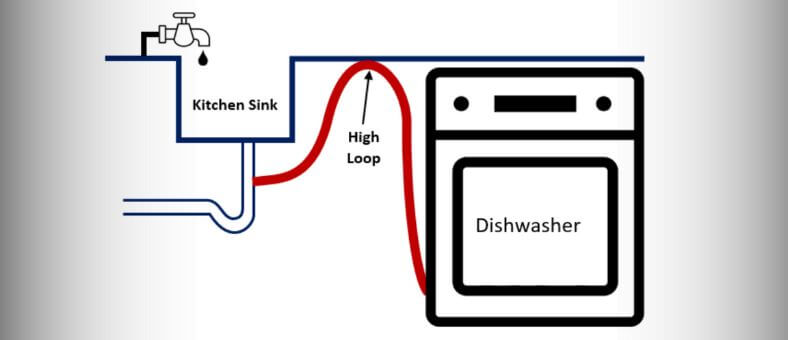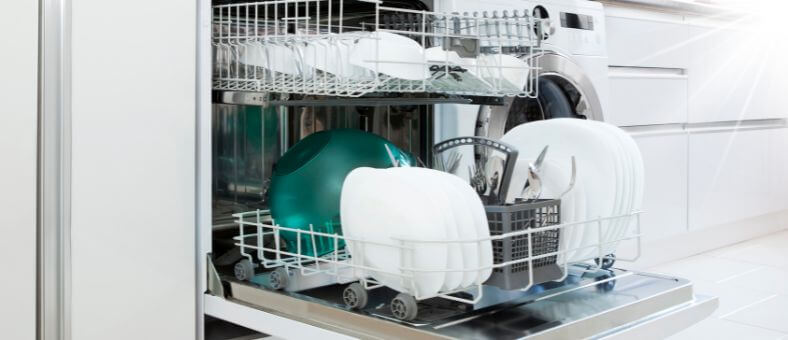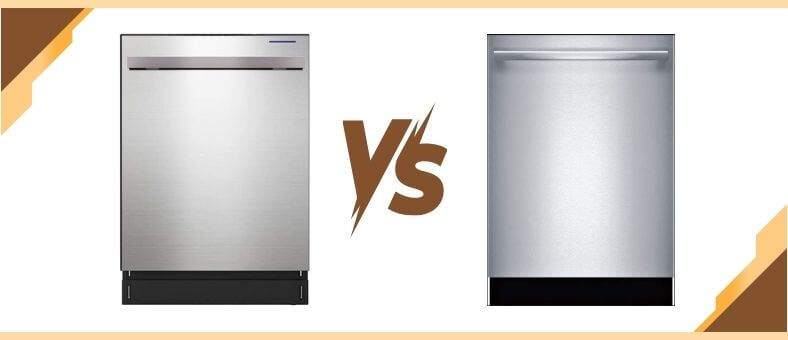Welcome to the fascinating world of dishwasher installation nuances! Have you ever heard of a “dishwasher high loop”? It’s a small component that is crucial in keeping your dishwasher performing optimally while maintaining your kitchen’s hygiene. As we embark on this journey together, we’ll dive into high loop basics, its pivotal role in your dishwasher, and why it’s essential for protection. We’ll also touch on setting up a high loop, common troubleshooting, and the difference between a high loop and an air gap. Get ready to turn the mundane into the intriguing. By the end of this exploration, you’ll be equipped with the knowledge to ensure your dishwasher runs effectively and efficiently.
Consumer Confidence Soars
According to a recent survey, 92% of dishwasher owners believe that understanding their appliance’s mechanics, like the high loop, boosts their confidence in its performance. Get in the know, and let the peace of mind flow!
Table of Contents
Understanding High Loop Basics
The term “high loop” might appear technical and complex, but once understood, it shines a new light on the efficiency of your dishwasher.
The high loop is the upward bend of your dishwasher’s drain hose. It’s installed beneath the kitchen sink and has one prime function – to prevent drain water from re-entering the dishwasher post-cycle. Picture it as a rollercoaster ride for the drain water: it climbs a steep ‘hill’ (the high loop) before rushing back ‘downhill’ towards the drain or garbage disposal.
This straightforward yet effective setup provides a physical barrier called an ‘air gap.’ Without getting too lost in physics, this air gap prevents the backward flow of water due to gravitational and pressure differences. It’s an essential shield that stops dirty drain water from backtracking into your dishwasher and contaminating your clean dishes.
By understanding the high loop basics, you gain insight into the workings of your dishwasher and the silent yet significant role this component plays in maintaining the cleanliness of your dishes. The high loop might be out of sight, but it should never be out of mind.
The High Loop’s Role in Your Dishwasher
Continuing our thrilling journey into the heart of your dishwasher, let’s focus our spotlight on the pivotal role of the high loop. It may not take center stage when we talk about the primary components of a dishwasher, but its function is undeniably critical.
Think of the high loop as the silent sentinel, ever-watchful and always working behind the scenes to ensure the health and hygiene of your dishwasher. Its primary function? To keep your clean dishes and the dirty drain water separate. The moment your dishwasher cycle ends, the dirty water needs a route out – that’s where our high loop springs into action.
Without this upward bend in the drain hose, there’s a risk that water from the sink or garbage disposal could flow back into your dishwasher, turning it into a breeding ground for germs and odors. By providing a high point in the hose, the loop ensures that water has to ‘climb a hill’ before it can return, a task it cannot accomplish due to gravity.
This role might seem simple, but it’s pivotal in the world of dishwashers. The high loop ensures your appliance is more than just a machine – it’s a health-conscious tool that promotes hygiene and cleanliness within your home.
Why a High Loop is Crucial for Dishwasher Protection
The purpose of a high loop extends beyond just hygiene – it also plays a crucial part in safeguarding your dishwasher’s lifespan and optimal operation.
Imagine a scenario where your dishwasher has just completed its cycle. The water used to clean your dirty dishes needs to be expelled. However, water could flow back into your dishwasher from the sink or garbage disposal without a high loop. Not only does this result in a hygiene issue, but it also means that your dishwasher is continuously subjected to residual water, creating an environment ripe for wear and tear, rust, and even mechanical failure.
The high loop acts as a defensive shield for your dishwasher. Preventing backflow ensures that your dishwasher’s internals stays dry and free from excess moisture when not in operation, extending the machine’s life and saving you from potentially costly repairs or replacements.
In essence, the high loop is the unsung hero that protects your dishwasher daily, ensuring it remains a reliable, efficient, and hygienic kitchen companion. As we move forward to our next point of discussion, setting up a high dishwasher loop, we’ll continue to unveil the fascinating intricacies of this vital kitchen appliance.
Common High Loop Troubleshooting
As we continue our thrilling exploration, it’s time to focus on the common troubleshooting associated with the high loop. Just like any other appliance component, high loops can occasionally face issues. But worry not – understanding these problems and potential solutions can ensure your dishwasher remains efficient.
Loop Drooping
Sometimes, the high loop might not stay ‘high.’ A hanging loop can lose its effectiveness, allowing the backflow of water into the dishwasher. The solution? Ensure your loop is securely attached under the countertop or sink cabinet, maintaining its height above the sink level.
Blocked or Kinked Hose
A blockage or kink in the drain hose can prevent water from draining correctly, potentially leading to backflow or a pool of water in your dishwasher. Regularly check your drain hose for any blockages or kinks, and remove any that you find.
Hose Length Issues
If your drain hose is too short, it might need to reach higher to create an effective loop. If it’s too long, it could make low points where water can collect, leading to blockages. Ensure your drain hose is of an appropriate length for your specific installation.
Inconsistent Performance
If your dishwasher is not cleaning dishes well or has a persistent odor, there could be an issue with the high loop. It’s worth checking the loop and considering a professional’s help to ensure it’s set up correctly.
As always, when in doubt, seek professional help. Trained technicians can effectively diagnose and rectify these issues, keeping your dishwasher in shape.
High Loop vs. Air Gap
However, both have the same aim – to prevent dirty water from re-entering your dishwasher – they achieve it in slightly different ways.
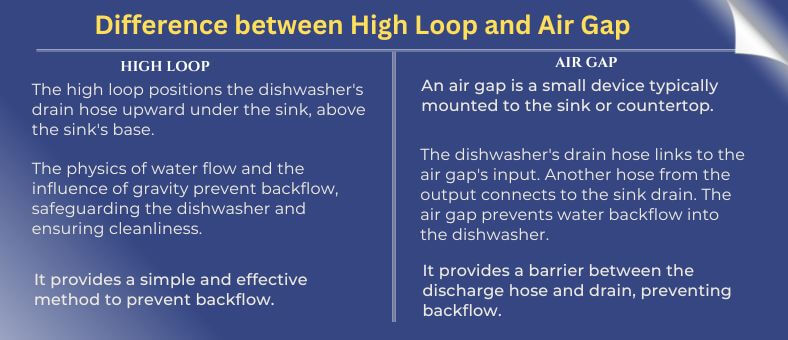
If you’re unsure about what Dishwasher Air Gaps are, dive into our detailed guide on Dishwasher Air Gaps.
So which is better? Both methods prevent water backflow effectively; the choice often comes down to local plumbing codes or personal preference. While high loops are simpler and cheaper, air gaps can provide a higher level of protection against backflow.
Air Gap: A Dishwasher Installation Necessity?
Dishwasher Floods: More Common Than You Think
Shockingly, thousands face kitchen floods every year due to improperly installed dishwashers. An air gap could’ve been their savior!
With a solid understanding of the distinctions between a high loop and an air gap, let’s explore the factors that might influence your decision to install an air gap.
While high loops and air gaps prevent backflow effectively, installing an air gap often comes down to specific needs, local building codes, and personal preferences.
#1. Local Building Codes
In some areas, local building codes may require an air gap installation regardless of whether a high loop could serve the same purpose. It’s always a good idea to check with your local authorities or a professional plumber before deciding on your setup.
#2. Level of Protection
Air gaps offer a higher level of protection against backflow. Creating a physical separation in the discharge hose guarantees no dirty drain water can enter your dishwasher, even if there’s a blockage downstream. If ensuring the highest level of cleanliness is your priority, an air gap could be the right choice.
#3. Dishwasher Model and Manufacturer Recommendations
Different dishwasher models may come with different recommendations from the manufacturer. While most dishwashers can function effectively with a high loop, some may specifically require an air gap.
#4. Aesthetics
An air gap is typically visible, often mounted next to the faucet on your sink. This isn’t an issue; for others, the high loop’s invisibility gives it an aesthetic edge.
Step-by-Step Guide to High Loop Installation in Your Dishwasher
Step 01: Identify the Drain Hose
Locate the drain hose, typically found at the back of the dishwasher. It’s a flexible tube that carries water from the dishwasher to the drain system.
Step 02: Route the Hose Correctly
Pull enough slack in the hose to route it upwards toward the bottom of the countertop or the top of the sink cabinet. Ensure that the hose is higher than the sink’s bottom at its highest point. This ‘climb’ is what creates the ‘high loop.’
Step 03: Secure the High Loop
Using clamps or zip ties, secure the high loop in place. You can fix it to the underside of the countertop or the inside wall of the sink cabinet. Make sure the high loop remains stable and doesn’t droop.
Step 04: Connect to the Drain
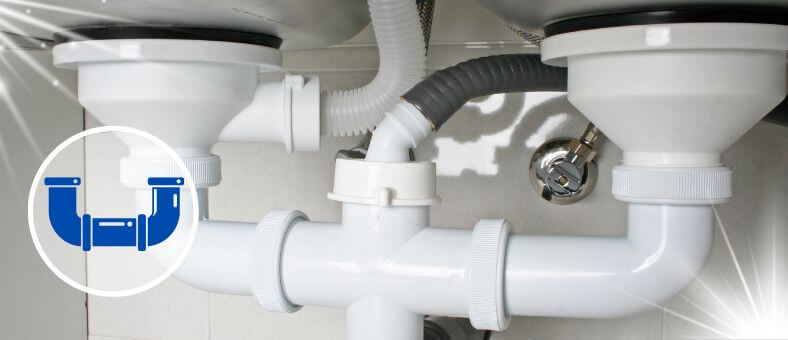
Once the high loop is secured, connect the other end of the drain hose to the kitchen drain or garbage disposal, following the manufacturer’s instructions.
Step 05: Check Your Work
After everything is set, run a cycle in the dishwasher and check for leaks or drainage issues. If there are no issues, congratulations – you’ve successfully installed a high loop!
Safety First with High Loops
Studies indicate that proper high-loop installation reduces dishwasher backflow incidents by up to 70%. Your dishes’ hygiene starts with installation.
The Cost Factor of High Loop Installation
Moving forward, let’s talk about the financial aspect of the high loop installation. When it comes to cost, the high loop setup is typically inexpensive and more cost effective than installing an air gap. The primary expenses are the cost of a hose clamp or zip tie to secure the loop and possibly a longer drain hose if the existing one isn’t sufficient. If you’re comfortable with DIY tasks, there’s no labor cost involved. However, if you hire a professional, the service charge becomes an additional expense. Although costs vary based on location and individual contractors, they are generally manageable. Altogether, the high loop installation is a budget-friendly solution for an essential aspect of your dishwasher’s hygiene and longevity.
Exploring the Pros and Cons of High Loop and Air Gap
Benefits of High Loop and Air Gap
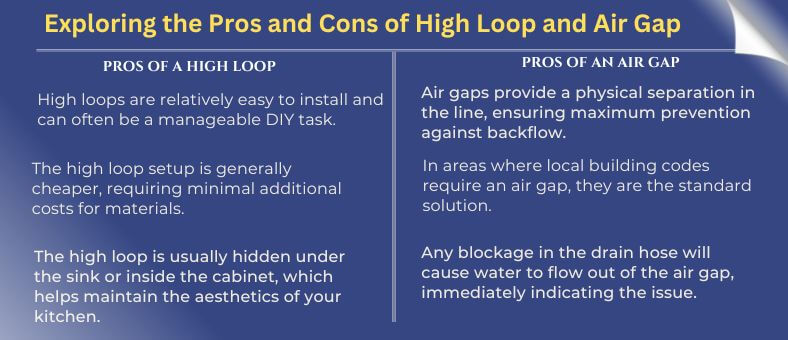
Drawbacks of High Loop and Air Gap
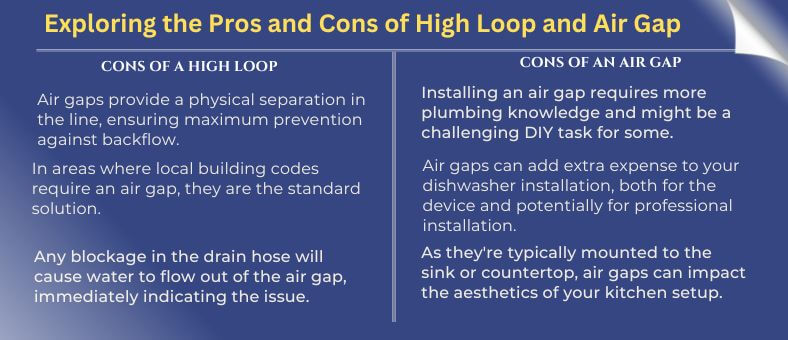
Maintaining Your Dishwasher’s High Loop Tips
- Regularly inspect the high loop setup to ensure the hose maintains its upward bend without drooping or sagging.
- Check for signs of leakage around the high loop area and the hose’s connection points. Replace the hose if leaks are detected.
- Avoid overloading the dishwasher. This can lead to less effective cleaning and potential water backup, affecting the high loop.
- Clean the drain hose periodically to prevent debris build-up, which can cause blockages and backflow.
- Schedule periodic professional check-ups for the dishwasher and high loop installation to ensure proper functioning and longevity.
Is A Dishwasher High Loop the Best Option?
High loops are easy to install, cost-effective, and discreet, effectively preventing backflow for dishwasher hygiene. Yet, if local codes mandate an air gap or you seek optimal backflow prevention, an air gap may be a stronger choice. Both options aim to stop dirty water from returning to the dishwasher. Your choice should reflect personal needs, preferences, and local rules. Proper setup and upkeep are vital for any option chosen.
Where to Install a Dishwasher Drain Line
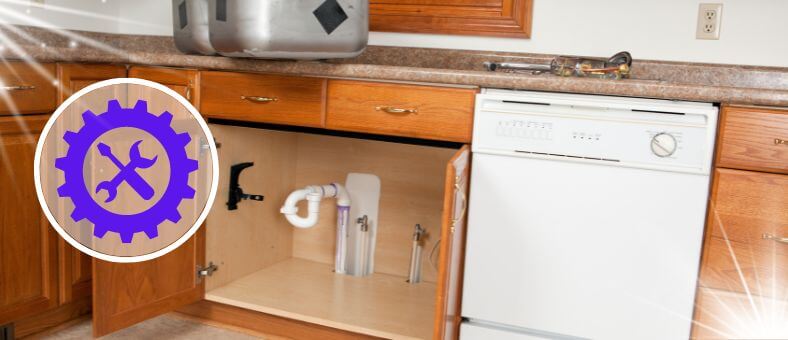
Placing a dishwasher drain line is crucial for the appliance’s proper functioning and your kitchen’s cleanliness. The drain line is typically connected to the sink drain or the garbage disposal under the kitchen sink. The ideal location provides an easy and direct path for water expelled from the dishwasher.
If you opt for a high loop setup, the dishwasher drain line is routed upward before reaching the drain, with its highest point higher than the sink’s bottom. This ‘high loop’ helps prevent the backflow of dirty water into the dishwasher.
If you’re using an air gap, the dishwasher drain line connects to the air gap mounted to the sink or countertop, and another hose runs from the air gap to the sink drain or garbage disposal.
While the process is typically straightforward, follow the manufacturer’s instructions for your dishwasher model. For those not comfortable with DIY or for installations where local codes require professional installation, calling a plumber might be your best bet. In either case, the goal is to ensure proper drain line installation, enabling your dishwasher to function efficiently and hygienically.
Conclusion: What is a Dishwasher High Loop?
The dishwasher high loop, marked by the drain hose’s upward bend, is essential in preventing dirty water backflow ensuring appliance hygiene. This efficient setup contrasts with the air gap, which offers a physical drain line separation, sometimes necessitated by local codes. The choice between the two depends on user preferences and regional guidelines. Proper drain line connection and regular maintenance are vital, regardless of the option chosen. In grasping the significance of a high loop or air gap, one learns the nuances of a dishwasher and truly excels in its optimal use.
At WashDryDazzle, we’re dedicated to providing essential insights that make your daily chores effortless. Dive deeper into our comprehensive Dishwasher Education hub to learn more.
Frequently Asked Questions (FAQs)
Why is the configuration of the drain hose necessary in dishwashers?
Proper drain hose configuration ensures efficient drainage, prevents backflow of dirty water into the dishwasher, and complies with many local plumbing codes.
Is there a preferred height for the high loop configuration?
Ideally, the highest point of the high loop should be higher than the base of the kitchen sink to ensure effective backflow prevention.
How does a high loop contribute to dishwasher safety?
A high loop prevents the backflow of potentially contaminated water from the sink into the dishwasher. This ensures the dishes are washed in clean water, safeguarding your health.
What is the primary purpose of a high loop in the dishwasher’s water flow?
The high loop’s main purpose is to prevent the potential backflow of water from the sink or garbage disposal back into the dishwasher, ensuring a clear path for water drainage.
Can I install a high loop with a double sink setup in my kitchen?
A high loop can be installed with a double sink setup. Ensure the drain hose connects to the sink drain or garbage disposal in a way that still maintains the high loop’s elevated curve.
Are there specific plumbing requirements for installing a dishwasher high loop?
The high loop should ideally be positioned just below the countertop to prevent backflow. The hose should maintain an upward bend without any sagging.

